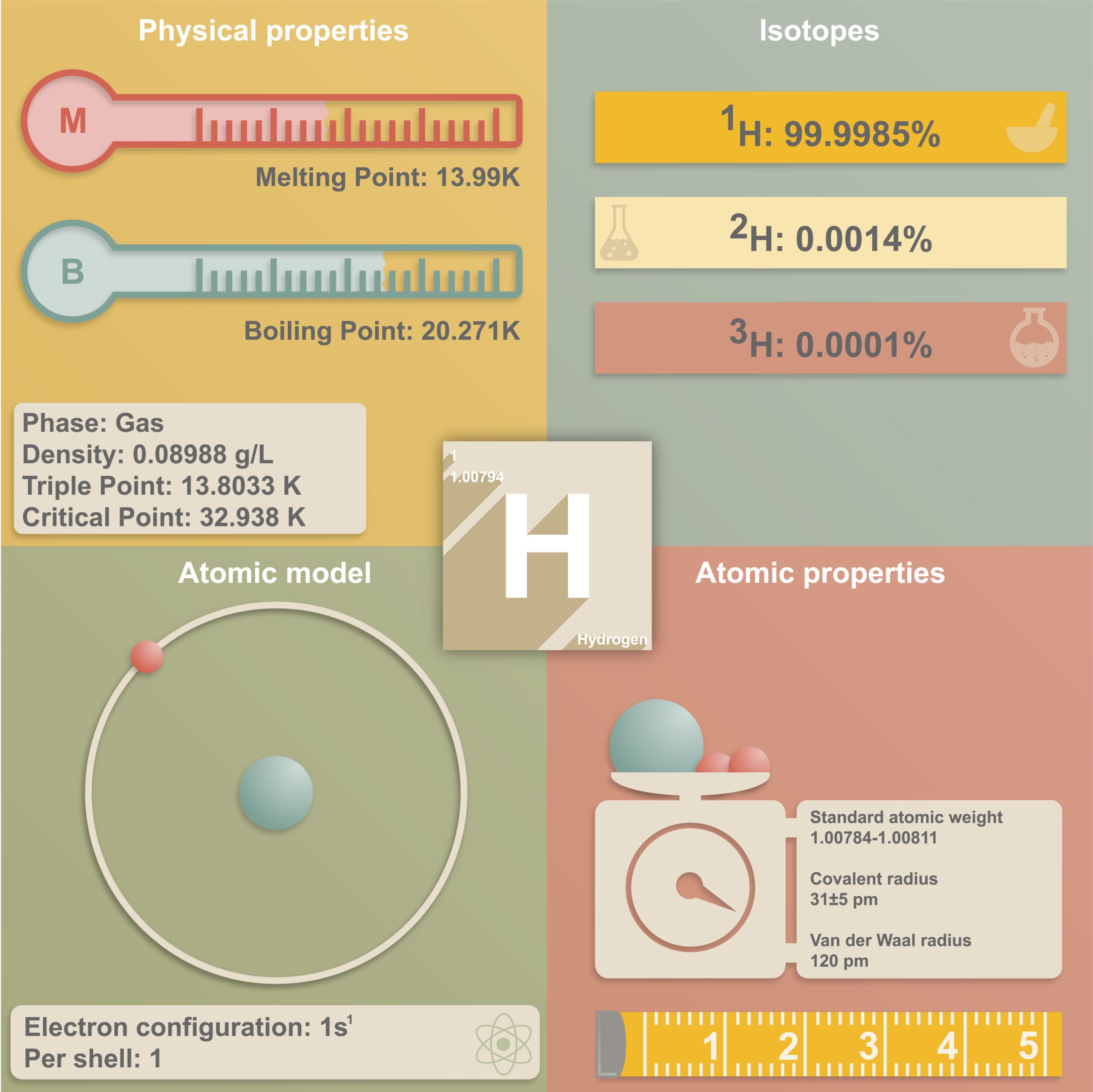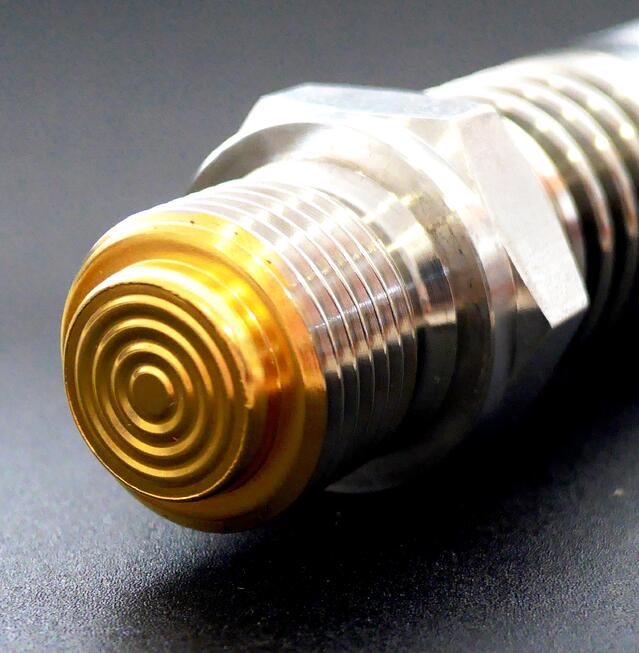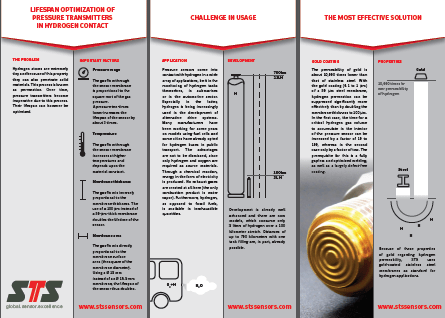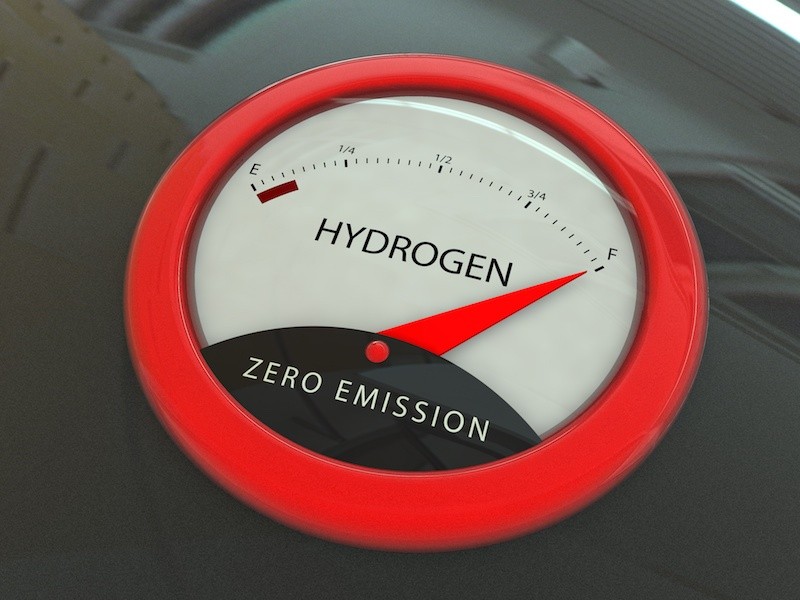Hydrogen atoms are extremely tiny and because of this property can even penetrate solid materials in a process known as permeation. Over time, pressure transmitters become inoperative due to this process. Their lifespan can however be optimized.
In piezoresistive pressure transmitters, the sensor chip is enveloped in a fluid, usually oil. This section is in turn enclosed by a very thin, 15 to 50-μm-thick, steel membrane. Because of the miniscule atomic dimension of hydrogen, the gas can diffuse through the crystal lattice of metals (see infographic). Over time, this penetrating gas leads to a no longer tolerable zero shift in the signal arising and the steel membrane bending outwards. The pressure sensor thus becomes unusable.
Overview of hydrogen properties

Infographic: malachy120///AdobeStock
Pressure sensors come into contact with hydrogen in a wide array of applications, be it in the monitoring of hydrogen tanks themselves, in submarines or in the automotive sector. Especially in the latter case, hydrogen is being increasingly used in the development of alternative drive systems. Many manufacturers have been working for several years on models incorporating fuel cells and some cities have already opted for hydrogen buses in public transport. The advantages are not to be dismissed, since only hydrogen and oxygen are required as source materials. Through a chemical reaction, energy in the form of electricity is produced, with no exhaust gases created at all (the combustion product is water vapor). Furthermore, hydrogen, as opposed to fossil fuels, is available in inexhaustible quantities. Development is already well advanced and there are now models, which consume only 3 liters of hydrogen over 100 kilometers, whilst distances of up to 700 kilometers with one tank filling are, in part, already possible.
In this branch, high-performance, high-precision pressure transmitters are necessary, which monitor the hydrogen tanks of the vehicles. More specifically, the pressure and temperature inside the hydrogen tank of the vehicle must be monitored. Pressures of up to 700 bar can arise here, but a broad temperature range must also be covered. It is imperative, of course, that the pressure transmitters used perform their duty over an extended period of time at the required precision. To optimize the lifespan of sensors in hydrogen applications, several influencing factors must be considered:
- Pressure range: The gas flow through the sensor membrane is proportional to the square root of the gas pressure. A ten-fold-lower pressure increases the lifespan of the sensor by about 3 times.
- Temperature: The gas flow through the sensor membrane increases at higher temperatures and depends upon the material constant.
- Membrane thickness: The gas flow is inversely proportional to the membrane thickness. The use of a 100 μm instead of a 50-μm-thick membrane doubles the lifetime of the sensor.
- Membrane area: The gas flow is directly proportional to the membrane surface area (the square of the membrane diameter). With a Ø 13 mm instead of an Ø 18.5 mm membrane, the lifespan of the sensor doubles.
Since high pressures and broad temperature fluctuations can occur inside the hydrogen tanks of vehicles, the lifespan of the sensors cannot be influenced by these two factors. The factors of membrane thickness and membrane area also only promise a limited remedy. Although the lifespan can be improved by these factors, it is still not yet optimal.
Gold coating: The most effective solution
The permeability of gold is 10,000 times lower than that of stainless steel. With the gold coating (0.1 to 1 μm) of a 50 μm steel membrane, hydrogen permeation can be suppressed significantly more effectively than by doubling the membrane thickness to 100 μm. In the first scenario, the time for a critical hydrogen gas volume to accumulate in the interior of the pressure sensor can be increased by a factor of 10 to 100, whereas in the second example only by a factor of two. The prerequisite for this is gapless and optimized welding, as well as a largely defect-free coating.

Image 1: Example of a pressure transmitter with gold coating
Because of these properties of gold regarding the permeability of hydrogen, STS uses gold-coated stainless steel membranes as standard in hydrogen applications.
Downlaod our free infographic on the subject:

Image 1: Example of a pressure transmitter with gold coating
